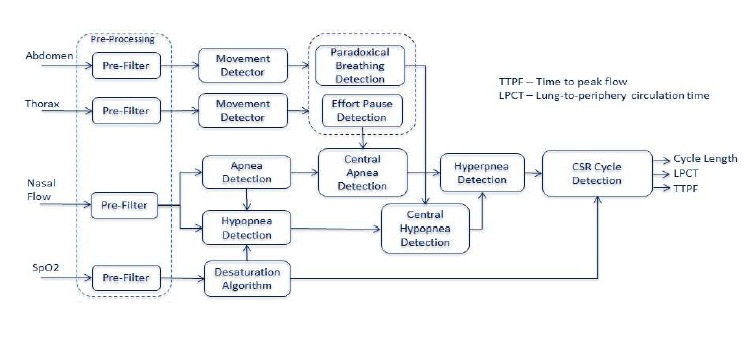- ALL COMPUTER, ELECTRONICS AND MECHANICAL COURSES AVAILABLE…. PROJECT GUIDANCE SINCE 2004. FOR FURTHER DETAILS CALL 9443117328


Projects > ELECTRONICS > 2017 > IEEE > DIGITAL SIGNAL PROCESSING
Cheyne-Stokes respiration (CSR) related features are significantly associated with cardiac dysfunction. Scoring of these features is labor-intensive and time-consuming. To automate the scoring process, an algorithm (ResCSRF) has been developed to extract these features from nocturnal measurement of respiratory signals. Methods: ResCSRF takes 4 signals (nasal flow, thorax, abdomen and finger oxygen saturation) as input. It first detects CSR cycles and then calculates the respiratory features [cyclelength (CL), lung-to-periphery circulation time (LPCT) and time to peak flow (TTPF)]. It outputs nightly statistics (mean, median, standard deviation (StD) and percentiles) of these features. It was developed and blindly tested on a group of 49 chronic heart failure (CHF) patients undergoing overnight in-home unattended respiratory polygraphy recordings.
Volume Overload Decompensation.
This paper presented an automated algorithm (ResCSRF) to automatically detect CSR-related features from multiple respiratory channels. Nightly statistics generated by ResCSRF from these features showed excellent correlation with expert sleep scoring. The use of an algorithm like ResCSRF could significantly reduce the computational cost of manually scoring individual recordings. The development and implementation of such an algorithm into a remote monitoring device is a positive step towards developing technologies capable of continuously monitoring cardiac function.
BLOCK DIAGRAM
